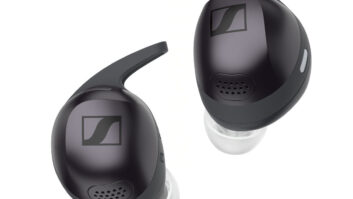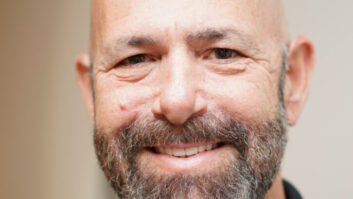Motorola has filed comments with the Federal Communications Commission (FCC) that could end the current deadlock plaguing Multi-Use Radio Service (MURS), a form of the popular FRS two-way radio that has seen skyrocketing growth in the past three years.
In its comments filed last week, Motorola asked the FCC to place restrictions on MURS for data, repeaters, antennae and telephone interconnects for at least two years, before the service is opened up to unrestricted use (as it stands now) to consumers.
If the FCC approves such restrictions, it is expected to give a jump-start to the production and sale of MURS radios. Suppliers have been reluctant to produce MURS radios because the service, as approved by the FCC in July 2000, did not list the normal restrictions placed on radio service and this has confused the market.
Motorola, in particular, was dissatisfied with the July 2000 MURS ruling, as the company has supplied thousands of radios on the MURS frequency (VHS 150MHz) to businesses who would not be able to properly operate the radios once the service was opened up to consumers.
In its “supplemental comments” to the FCC, Motorola asked the commission to relax the red tape associated with a pool of two-watt business channels (or “uncoordinate” the pool). It then called for the FCC to restrict MURS usage for two years, dating from the changes in the business channels.
This would give Motorola time to move its current business users on MURS to the new “uncoordinated” business channels. After the two-year transition period, the FCC could then remove the MURS restrictions, said Greg Spillane, Motorola director of strategy and product planning.
“We just want to put restrictions on MURS until two years after this new business pool is further clarified,” he added.
In its comments regarding the original July creation of MURS as a consumer service, Motorola wrote, “the FCC’s decision failed to adequately protect incumbent business and industrial users.” The petition also pointed out that the lack of restrictions on MURS could result in “the ability to interconnect MURS devices with the public switched telephone network [and] invite the development of a two-watt cordless VHF telephone.”
It further noted that last year’s FCC ruling, “has resulted in a wait-and-see attitude by manufacturers and that no new product developments have been introduced.” To ameliorate the situation, Motorola recommends that for two years following the ruling on the pool of business channels: “1. Transitional MURS designs should be voice-only, no data products would be permitted. 2. Interconnection with the public switched telephone service would be prohibited. 3. There should be no repeaters authorized under Part 95.
4. Antennas should be non-detachable and integral to the radio unit.”
Suppliers were not available for comment at press time. However, Corwin Moore, administrative coordinator of a leading two-way radio user group, Personal Radio Steering Group (PRSG), Ann Arbor, Mich., which has been very active in the FCC proceedings, noted, “I think it will be encouraging for other suppliers. The FCC takes comments from manufacturers very seriously. There have been a lot of uncertainties around this issue, so any action at all is good.”
Suppliers such as Audiovox, Midland, Topaz3 (Maxon), and Unwired originally raced to create MURS radios when the FCC approved the new service for two-watt radios with a five-mile range. Last year they hailed the service as a great benefit to consumers because it provided higher power than FRS (with ½ watt, two-mile range) but without the need for a user license, as in most other high power radios.
However, the confusion about the lack of restrictions on the service, and the problems in diverting incumbent business users on MURS led Motorola, RadioShack and PRSG to file Petitions for Reconsideration with the FCC in November, which effectively halted all development of MURS radios by suppliers. (TWICE, Nov. 6, 2000, p.32; Dec. 18, 2000, p.85; and Feb. 26, 2001, p. 37.)
In the interim, many users are purchasing MURS business radios from RadioShack or on the Internet, according to Moore, who claims traffic on the MURS band is up 50 percent since the VHS 150MHz band was reassigned to consumer use last July.
“There were about 150,000 MURS licensees and one million users — mostly small businesses such as drive-in restaurants, construction sites and survey crews — before the rules changed. I listen and monitor these channels and I’m hearing a lot more recreational and CB type usage now,” Moore said. “It’s difficult to put a number on the increased traffic but there’s been at least a 50 percent jump in usage of those frequencies.”
Moore added that it is imperative the FCC act on the MURS petitions for reconsideration soon. “In the meantime the service is becoming quite popular. Our feeling is the longer that the FCC allows this to continue, it will be harder for it to make any changes, or tell those operating in the service that the spectrum is no longer available without a serious PR problem,” he said.
Suppliers such as Topaz3 said last week, prior to the Motorola comments, that they are still interested in the service and said it has “a couple of products in to the FCC waiting for approval,” according to marketing director Charlie Speights. Audiovox says it has developed MURS product ready to submit to the FCC, but is waiting for clarification. Cobra said it has not developed MURS product due to the confusing nature of the July 2000 ruling.













